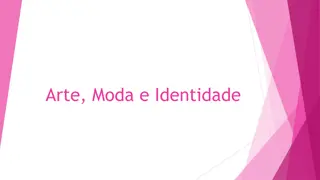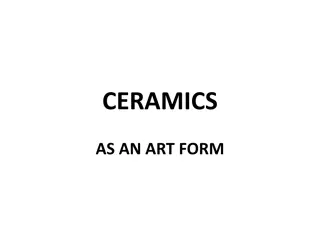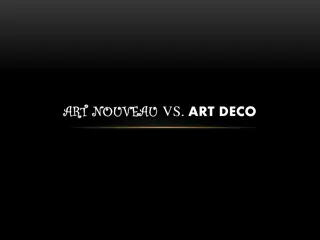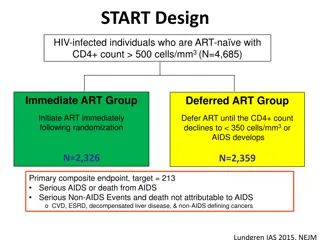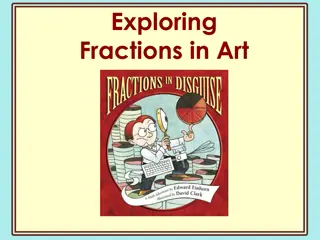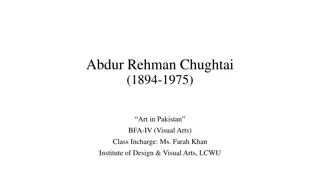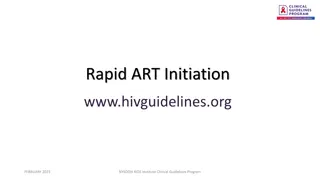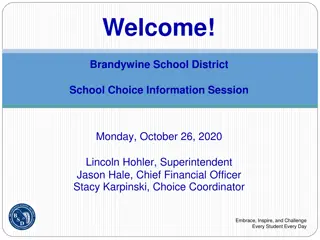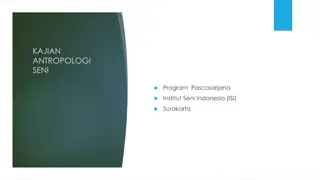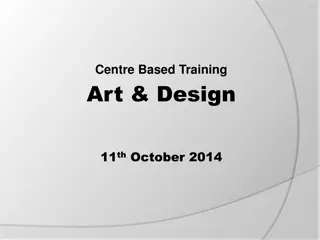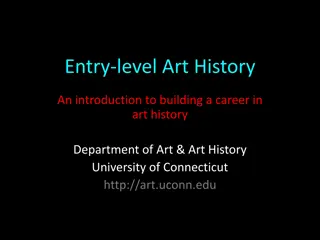Choice-Based Learning in Art Education
Embrace the creative freedom of choice-based art learning, where students explore various mediums and techniques at their own pace, fostering artistic behaviors and individual growth. Experience the personal, pedagogical, classroom, and assessment contexts that shape this innovative approach, empowering students to make meaningful artistic choices and develop their skills through hands-on experimentation.
Download Presentation

Please find below an Image/Link to download the presentation.
The content on the website is provided AS IS for your information and personal use only. It may not be sold, licensed, or shared on other websites without obtaining consent from the author.If you encounter any issues during the download, it is possible that the publisher has removed the file from their server.
You are allowed to download the files provided on this website for personal or commercial use, subject to the condition that they are used lawfully. All files are the property of their respective owners.
The content on the website is provided AS IS for your information and personal use only. It may not be sold, licensed, or shared on other websites without obtaining consent from the author.
E N D
Presentation Transcript
+ Choice-Based Art Teaching for Artistic Behaviors
+What is Choice-Based Learning? Each classroom is set up with different centers such as drawing, printmaking, sculpture, clay, etc Students are given a demo of a new technique, artist and material every class, or every few classes After the demo, students choose a center in which medium to work in and what to make that day Teacher lessons take a back seat to the student s interests Students are treated like artists and learn to behave like artists
+The Four contexts of Choice-Based Learning: PERSONAL CONTEXT Choice based art education regards students as artists and offers students real choices for responding to their own ideas and interests through art making. PEDAGOGICAL CONTEXT Choice based art education supports multiple modes of learning and teaching. CLASSROOM CONTEXT Choice based art education provides resources and opportunities to construct knowledge and meaning in the process of making art. ASSESSMENT Choice based art education utilizes multiple forms of assessment to support student and teacher growth
+ Permanent centers may include more traditional forms of art (drawing, painting, sculpting) Choice-Based classrooms are set up with different art medium centers around it for students to choose from. Each center has been introduced to students so they have a full working knowledge of each medium and technique Temporary centers may be rotated throughout the school year and include special interests (mixed media, knitting, jewelry) These choices benefit students because they allow them to : work at their own speeds, work on their strengths, learn from and work with peers, stay on task, stay engaged, develop workshop style, and responsibility for centers and materials
Teachers Can: Have more one on one time with each student to determine strengths and weaknesses Provide more in depth instruction Provide scaffolding one layer build another layer, building skills, building off of skills for struggling students Get to know their students Individual instructions for students Provide more time for creating, a unique studio space, a wide range of materials, group and individual instruction for students +
+ Curriculum Instead of having a curriculum based on the completion of projects and on teacher lessons, the curriculum would be based on the mastery of skills, effort students put into projects, creative problem solving and making artistic choices.
+Meeting State and National Standards Rubrics that are negotiated between students and teachers establish the criteria for work throughout the year. Criteria should be generalized to fit all centers and affirm all levels of ability. Daily/ Weekly demos, self assessments, and many other classroom tools and techniques can help teachers meet standards in Choice Based Art Education. Rubrics become class standards for overall performance and provide a basis for student achievement. Such as: Teachers train students to perform self assessment through introduction and modeling of various assessment tools, such as journals, artist statements, sharing sessions, and presentations. Students use information gained in self assessments to build confidence and measure their progress. Teachers use information gained in self assessments to redirect individualized and group instruction and to develop new curricula.
+ Surveys, questionnaires, and group discussions can help identify student understandings in various content areas. Collaborative assessment may take the form of peer teaching, sharing of work, curating single or group exhibits, discussions, and conferences with the teacher. Teachers create manageable methods for documenting student progress utilizing checklists, observations and dialogues, journals, and other self assessment materials Written evaluations reflect multiple assessments over a period of time. Evaluations document student understandings and abilities. In addition to skills, work habits should be acknowledged, including time management, persistence, risk taking, and focus.
+Teaching for Artistic Behavior (TAB) What is TAB? Teaching for Artistic Behavior, or TAB, is a teaching approach to choice-based art education. The approach allows students to explore and experiment the work of an artist through authentic learning opportunities and responsive teaching. It allows educators to teach authentic art making opportunities for students, while implementing the choice-based education approach. http://teachingforartisticbehavior.org/
+ Clay Center
+ Digital Arts Center
+ Paint Center
+ Printmaking Center



